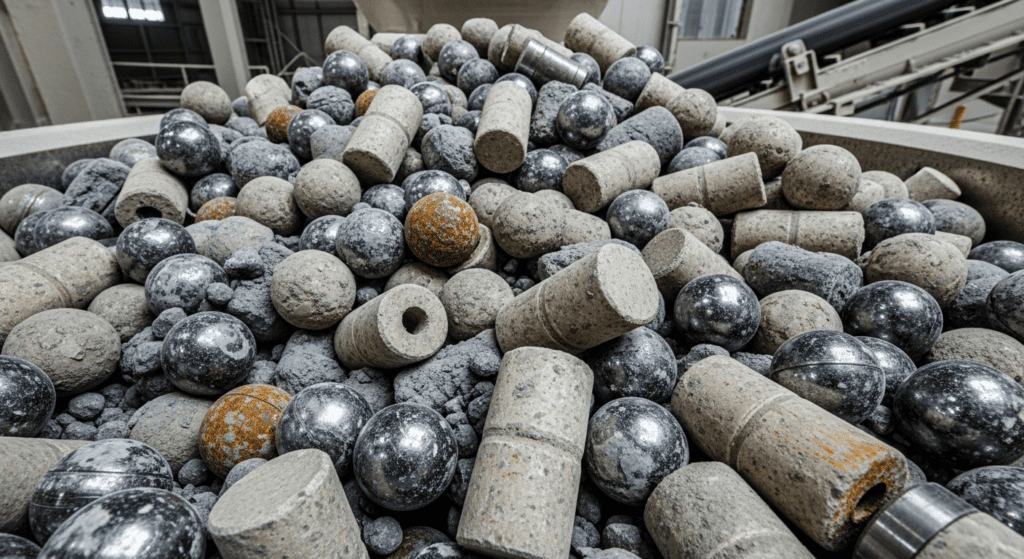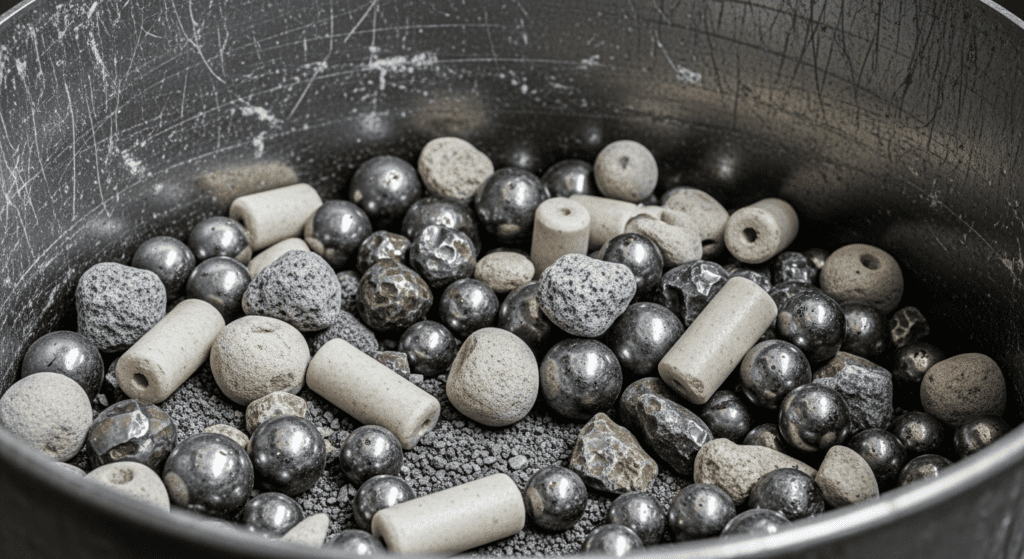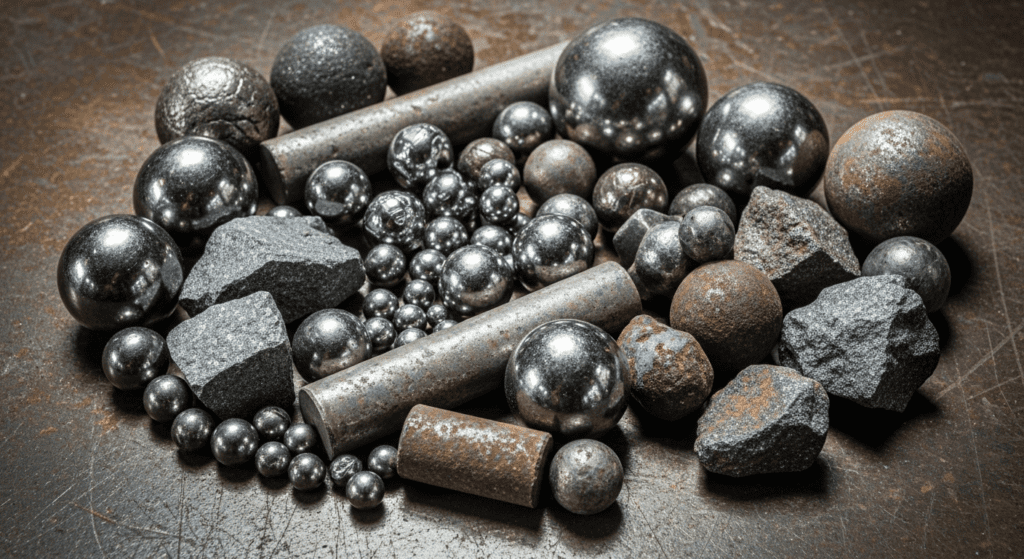Grinding media are the materials used inside ball mills, bead mills, and other grinding equipment to break down raw materials into smaller particles.
The five main types include forged steel balls, cast iron balls, stainless steel balls, ceramic media (alumina, zirconia, zirconium silicate), and glass beads. Each type offers specific advantages in hardness, density, and chemical resistance.
Your choice depends on your material’s hardness, contamination requirements, and budget—steel works for mining, ceramics for pharmaceuticals, and glass beads for fine polishing.

Forged steel balls dominate the mining and cement industries because they combine high hardness with excellent impact resistance. These grinding media undergo a forging process that aligns the steel’s grain structure, creating balls that can withstand repeated high-energy impacts without breaking.
The carbon content typically ranges from 0.5% to 1.0%, determining the final hardness level. Higher carbon means harder balls but reduced toughness.
Most operations use forged steel balls between 20mm and 125mm diameter. They excel at grinding hard minerals like copper ore, gold ore, and iron ore where contamination isn’t a primary concern.
Cast iron balls offer a cost-effective alternative to forged steel for less demanding applications. Manufacturing involves pouring molten iron into molds, making them cheaper to produce in large quantities.
These grinding media work well in cement mills and coal pulverization where moderate hardness suffices. Cast iron balls typically contain 2-4% carbon, giving them good wear resistance but making them more brittle than forged steel.
The main trade-off is durability. Cast iron balls wear faster and may break under extreme impact, but their lower cost often justifies more frequent replacement in certain processes.
Stainless steel grinding media prevent contamination in food processing, pharmaceuticals, and cosmetics production. The chromium content (typically 10-30%) creates a passive oxide layer that resists corrosion and prevents metal leaching into products.
These balls maintain their surface finish longer than carbon steel alternatives. This smooth surface reduces product contamination and makes cleaning between batches easier.
The higher cost limits their use to applications where product purity justifies the investment. Common grades include 304, 316, and 440C stainless steel, each offering different balances of hardness and corrosion resistance.
Ceramic media excel where metal contamination must be avoided entirely. Four main types serve different industries:
Glass beads serve specialized applications requiring gentle grinding action and zero metallic contamination. These spherical grinding media range from 0.1mm to 5mm diameter, making them perfect for dispersing pigments and grinding temperature-sensitive materials.
The smooth surface and controlled size distribution produce consistent particle sizes in the final product. Paint manufacturers rely on glass beads to achieve specific gloss levels and color consistency.
Their lower density means less kinetic energy per impact. This protects delicate materials but requires longer grinding times for harder substances.

Spherical balls remain the most common grinding media shape because they provide uniform wear patterns and predictable grinding action. The sphere’s geometry ensures even stress distribution during impacts, maximizing lifespan.
Ball-to-ball contact creates multiple grinding points simultaneously. This increases efficiency compared to irregular shapes that might only contact at limited points.
Cylinders and cylpebs (short cylinders with rounded ends) offer more surface area than spheres of equivalent weight. This increased contact area improves grinding efficiency in certain applications, particularly in the cement industry.
The cylindrical shape reduces the void spaces between media pieces. This means more grinding surface in the same mill volume, potentially increasing throughput by 15-25% compared to balls.
These shapes work best in secondary grinding circuits where finer particle sizes are needed.
Rod mills use long steel rods as grinding media instead of balls or cylinders. The rods typically run the entire length of the mill, creating a different grinding action through rolling and sliding rather than impact.
This rolling action produces a narrower particle size distribution than ball milling. Rods excel at reducing 20mm feed material down to 1-3mm without creating excessive fines.
The main limitation is capacity. Rod mills process less material per hour than ball mills of similar size.
Micro-sphere beads enable ultra-fine grinding down to nanometer scales. These tiny grinding media, often 0.05mm to 2mm diameter, work in specialized bead mills for producing inks, pharmaceuticals, and advanced materials.
Smaller beads mean more contact points per unit volume. A liter of 0.5mm beads contains millions of individual grinding surfaces.
The challenge lies in separation. Screens or centrifugal separators must effectively remove these tiny beads from the finished product.

Forged steel balls last 5,000-15,000 hours in mining applications. Ceramic media can run 10-20 times longer than steel in fine grinding. Cast iron balls typically wear out 30-50% faster than forged steel under similar conditions.
Mixing media types isn’t recommended as different wear rates create size variations that reduce grinding efficiency. However, using multiple sizes of the same media type (called graded media) improves packing density and grinding performance.
Start with 40-50% of mill volume for ball mills, adjusting based on your specific process. Most suppliers provide charge calculators based on your mill specifications and material properties.
